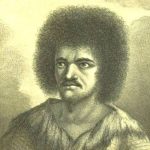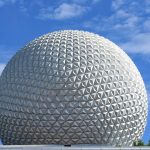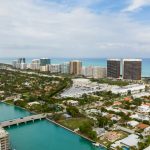
Country Overview:
Explored and settled by the Spanish in the 16th century, Panama broke with Spain in 1821 and joined a union of Colombia, Ecuador, and Venezuela – named the Republic of Gran Colombia. When the latter dissolved in 1830, Panama remained part of Colombia. With US backing, Panama seceded from Colombia in 1903 and promptly signed a treaty with the US allowing for the construction of a canal and US sovereignty over a strip of land on either side of the structure (the Panama Canal Zone). The Panama Canal was built by the US Army Corps of Engineers between 1904 and 1914. In 1977, an agreement was signed for the complete transfer of the Canal from the US to Panama by the end of the century. Certain portions of the Zone and increasing responsibility over the Canal were turned over in the subsequent decades. With US help, dictator Manuel NORIEGA was deposed in 1989. The entire Panama Canal, the area supporting the Canal, and remaining US military bases were transferred to Panama by the end of 1999. In October 2006, Panamanians approved an ambitious plan to expand the Canal. The project, which began in 2007 and could double the Canal’s capacity, is expected to be completed in 2014-15.
Location:
Central America, bordering both the Caribbean Sea and the North Pacific Ocean, between Colombia and Costa Rica
Geographic coordinates:
9 00 N, 80 00 W
Area:
Total: 78,200 sq km, land: 75,990 sq km, water: 2,210 sq km
Area – Comparative:
Slightly smaller than South Carolina
Land boundaries:
Total: 555 km, border countries: Colombia 225 km, Costa Rica 330 km
Coastline:
2,490 km
Climate:
Tropical maritime; hot, humid, cloudy; prolonged rainy season (May to January), short dry season (January to May)
Terrain:
Interior mostly steep, rugged mountains and dissected, upland plains; coastal areas largely plains and rolling hills
Elevation extremes:
Lowest point: Pacific Ocean 0 m
Highest Point:
Highest point: Volcan Baru 3,475 m
Natural Resources:
Copper, mahogany forests, shrimp, hydropower
Population:
3,309,679 (July 2008 est.)
Nationality:
Panamanian(s)
Nationality:
Panamanian
Ethnic groups:
Mestizo (mixed Amerindian and white) 70%, Amerindian and mixed (West Indian) 14%, white 10%, Amerindian 6%
Religions:
Roman Catholic 85%, Protestant 15%
Languages:
Spanish (official), English 14%; note – many Panamanians bilingual
Country Name:
Panama
Government Type:
Constitutional democracy
Capital Name:
Panama City
Independence:
3 November 1903 (from Colombia; became independent from Spain 28 November 1821)
National Holiday:
Independence Day, 3 November (1903)
Constitution:
11 October 1972; major reforms adopted 1978, 1983, 1994, and 2004
Legal System:
Based on civil law system; judicial review of legislative acts in the Supreme Court of Justice; accepts compulsory ICJ jurisdiction with reservations
Executive Branch:
chief of state: President Martin TORRIJOS Espino (since 1 September 2004); First Vice President Samuel LEWIS Navarro (since 1 September 2004); Second Vice President Ruben AROSEMENA Valdes (since 1 September 2004); note – the president is both the chief of state and head of government
Head of Government:
President Martin TORRIJOS Espino (since 1 September 2004); First Vice President Samuel LEWIS Navarro (since 1 September 2004); Second Vice President Ruben AROSEMENA Valdes (since 1 September 2004)
Cabinet:
Cabinet appointed by the president
Elections:
president and vice presidents elected on the same ticket by popular vote for five-year terms (not eligible for immediate reelection; president and vice presidents must sit out two additional terms (10 years) before becoming eligible for reelection); election last held 2 May 2004 (next to be held on 3 May 2009); note – beginning in 2009, Panama will have only one vice president election results: Martin TORRIJOS Espino elected president; percent of vote – Martin TORRIJOS Espino 47.5%, Guillermo ENDARA Galimany 30.6%, Jose Miguel ALEMAN 17%, Ricardo MARTINELLI 4.9%





